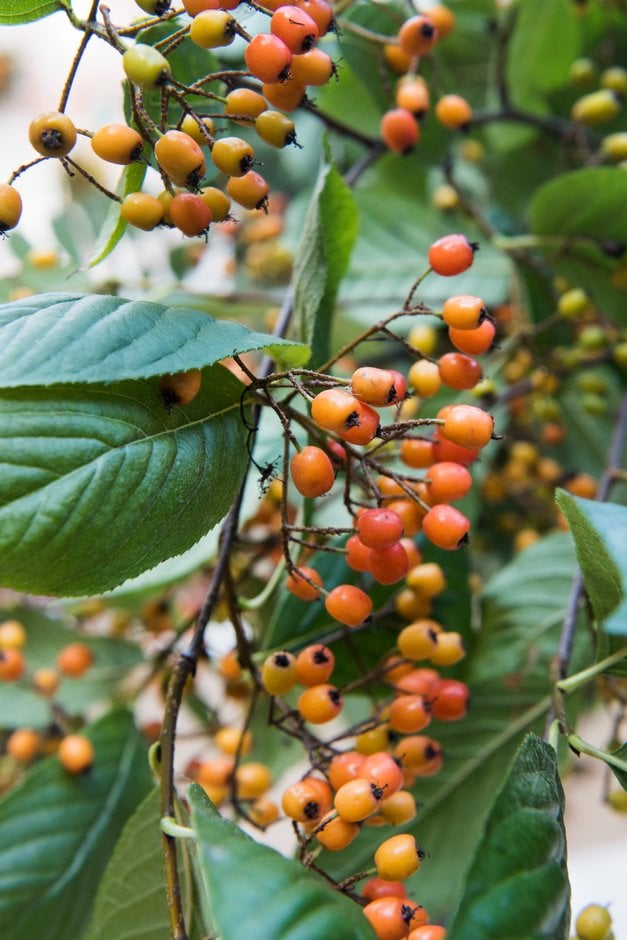Photinia beauverdiana var. notabilis
noble Christmas berry
A fast-growing deciduous tree to around 9m tall with fine-toothed ovate to elliptic leaves up to 12.5cm long. Clusters, 7.5-10cm in diameter, of small white flowers appear in spring and are followed by orange-red berries
Size
Ultimate height
8–12 metresTime to ultimate height
20–50 yearsUltimate spread
4–8 metresGrowing conditions
Moisture
Moist but well–drained, Well–drainedpH
Acid, NeutralColour & scent
| Stem | Flower | Foliage | Fruit | |
| Spring | White | Green | ||
|---|---|---|---|---|
| Summer | Green | |||
| Autumn | Red | Red | ||
| Winter |
Position
- Full sun
- Partial shade
Aspect
South–facing or North–facing or East–facing or West–facing
Exposure
Exposed or Sheltered Hardiness
H5Botanical details
- Family
- Rosaceae
- Native to GB / Ireland
- No
- Foliage
- Deciduous
- Habit
- Bushy
- Potentially harmful
- Fruit are ornamental - not to be eaten. Wear gloves and other protective equipment when handling. Pets: Fruit are ornamental - not to be eaten - see the HTA guide to potentially harmful plants for further information and useful contact numbers
- Genus
Photinia can be evergreen or deciduous shrubs or trees, with simple leaves and panicles of small white flowers, usually followed by red berries
- Name status
Correct
- Plant range
- China
How to grow
Cultivation
Grow in fertile, humus-rich, acid or neutral soil in sun or partial shade. See photinia cultivation
Propagation
Propagate by semi-hardwood cuttings in summer
Suggested planting locations and garden types
- City and courtyard gardens
- Cottage and informal garden
- Wildlife gardens
- Low Maintenance
- Flower borders and beds
Pruning
Pests
Generally pest-free
Diseases
May be susceptible to fireblight, a leaf spot, honey fungus and powdery mildews
Get involved
The RHS is the UK’s gardening charity, helping people and plants to grow - nurturing a healthier, happier world, one person and one plant at a time.
